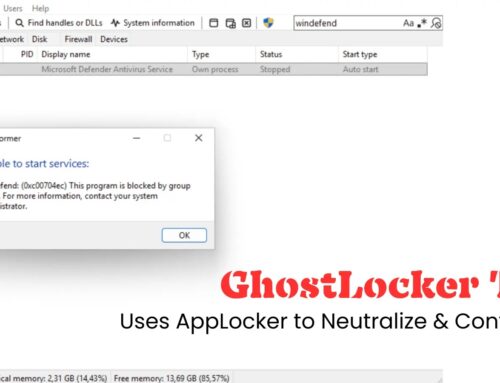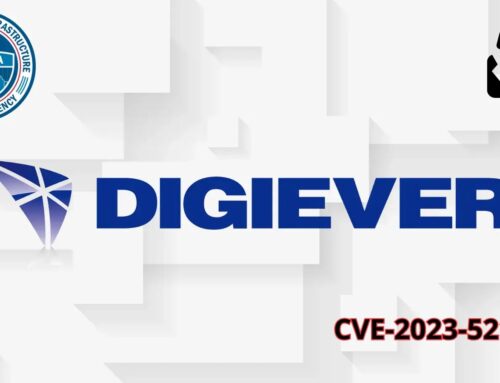
Tata Motors Data Leak – 70+ TB of Sensitive Info and Test Drive Data Exposed via AWS Keys
Unpacking the Tata Motors Data Leak: A Deep Dive into AWS Key Exposure
The digital landscape is a minefield of vulnerabilities, and a recent disclosure regarding Tata Motors serves as a stark reminder of the critical importance of secure cloud configurations. Security researcher Eaton Zveare brought to light significant flaws in Tata Motors’ systems, leading to the exposure of over 70 terabytes of sensitive data. This incident, rooted in hardcoded AWS access keys, underscores a pervasive challenge for organizations managing vast data estates in the cloud.
The Anatomy of the Breach: Hardcoded AWS Keys and Data Exposure
The core of the Tata Motors data leak stemmed from a classic, yet alarmingly common, security misstep: the presence of hardcoded AWS access keys on publicly accessible websites. Zveare’s ethical hacking efforts in 2023 uncovered these critical vulnerabilities, which, when exploited, granted unauthorized individuals immediate access to a treasure trove of sensitive information. The breadth of exposed data is staggering, encompassing:
- Customer personal information
- Financial reports
- Fleet management details
- Internal documents
- Proprietary business data
- Test drive data
In essence, these hardcoded credentials acted as master keys, unlocking vast S3 buckets and other AWS resources, making 70+ TB of data readily available to anyone who discovered them. This scenario highlights the severe consequences of neglecting fundamental security hygiene, particularly concerning Infrastructure as Code (IaC) and sensitive credential management.
Understanding AWS Access Keys: The Double-Edged Sword
AWS Access Keys consist of an Access Key ID and a Secret Access Key. They are programmatic credentials that allow applications and users to interact with AWS services. While essential for automation and API access, their careless handling presents a grave security risk. Storing these keys directly within publicly accessible code repositories, configuration files on web servers, or front-end applications negates the robust security measures inherent in the AWS platform itself. When exposed, these keys grant attackers the same level of access as the legitimate user or service they represent, potentially leading to data exfiltration, service disruption, and even resource manipulation.
The Impact: Beyond Data Loss
The ramifications of a data leak of this magnitude extend far beyond the immediate loss of sensitive information. For Tata Motors, potential consequences include:
- Reputational Damage: Erosion of customer trust and brand image.
- Regulatory Fines: Non-compliance with data protection regulations (e.g., GDPR, CCPA).
- Legal Action: Lawsuits from affected customers and stakeholders.
- Competitive Disadvantage: Exposure of proprietary business strategies and financial data.
- Operational Disruption: Remediation efforts requiring significant resource allocation.
For individuals whose data was compromised, the threat of identity theft, phishing attacks, and other forms of fraud becomes a very real concern.
Remediation Actions: Securing Your AWS Environment
Preventing such incidents requires a proactive and multi-layered approach to security. Organizations leveraging AWS must prioritize robust credential management and continuous security auditing. Here are critical remediation actions and best practices:
- Rotate and Revoke Compromised Keys Immediately: If an AWS key is suspected of being compromised, revoke it immediately and generate new ones.
- Avoid Hardcoding Credentials: Never embed AWS access keys directly into application code, configuration files, or public repositories (GitHub, GitLab, etc.).
- Utilize AWS IAM Roles: Employ IAM roles for applications and services that need to interact with AWS. Roles provide temporary credentials and eliminate the need for long-lived access keys.
- Leverage AWS Secrets Manager or AWS Systems Manager Parameter Store: Securely store and retrieve sensitive credentials, API keys, and other secrets.
- Implement Least Privilege: Grant only the necessary permissions for each IAM user or role to perform its intended function.
- Enable Multi-Factor Authentication (MFA): Enforce MFA for all AWS accounts, especially root accounts.
- Regular Security Audits and Penetration Testing: Routinely scan public-facing assets and internal systems for exposed credentials or misconfigurations.
- Monitor AWS CloudTrail and CloudWatch: Continuously monitor API calls and resource activity for suspicious behavior and unauthorized access attempts.
- Educate Developers: Foster a strong security culture within development teams, emphasizing secure coding practices and credential management policies.
AWS Security Tools for Detection and Mitigation
Utilizing the right tools is paramount for maintaining a secure AWS posture. Here is a selection of essential tools for detection, scanning, and mitigation:
| Tool Name | Purpose | Link |
|---|---|---|
| AWS IAM Access Analyzer | Identifies resources shared with an external entity, flagging potential unauthorized access. | https://aws.amazon.com/iam/features/access-analyzer/ |
| AWS Secrets Manager | Securely stores, manages, and rotates database credentials, API keys, and other secrets. | https://aws.amazon.com/secrets-manager/ |
| AWS Config | Assesses, audits, and evaluates the configurations of your AWS resources. | https://aws.amazon.com/config/ |
| TruffleHog | Scans repositories for hardcoded credentials and sensitive data. | https://github.com/trufflesecurity/trufflehog |
| detect-secrets | An extensible framework for detecting and preventing secrets in code. | https://github.com/Yelp/detect-secrets |
Key Takeaways from the Tata Motors Incident
The Tata Motors data exposure is a potent reminder that cloud security is a shared responsibility. While AWS provides a secure infrastructure, customers are responsible for securing their data within that infrastructure. The critical lessons learned from this incident include the absolute necessity of rigorous credential management, adherence to the principle of least privilege, and continuous monitoring of public-facing assets for inadvertent exposure of sensitive information. Organizations must prioritize educating their development and operations teams on secure coding practices and cloud security best practices to prevent similar breaches in the future.





